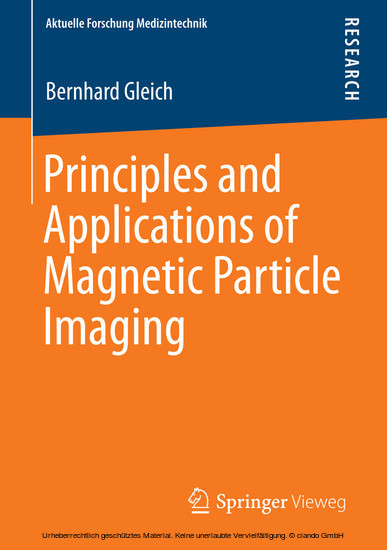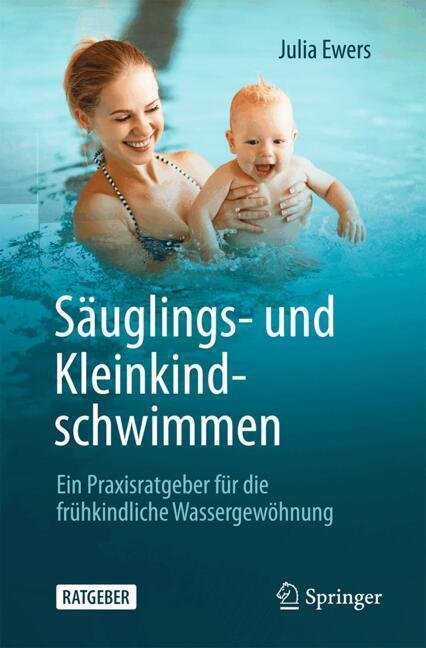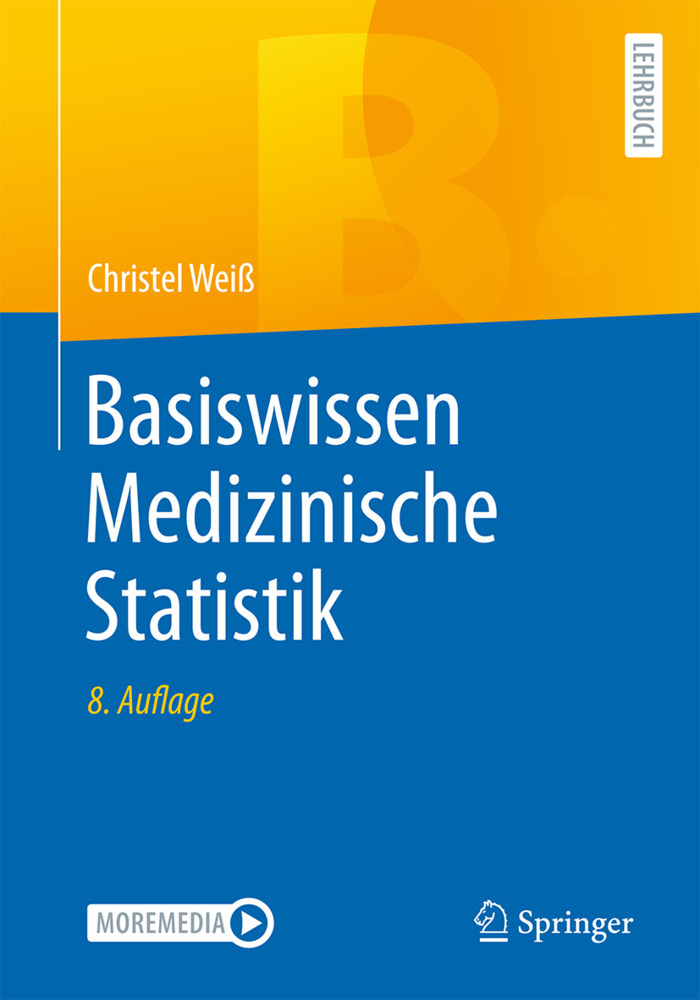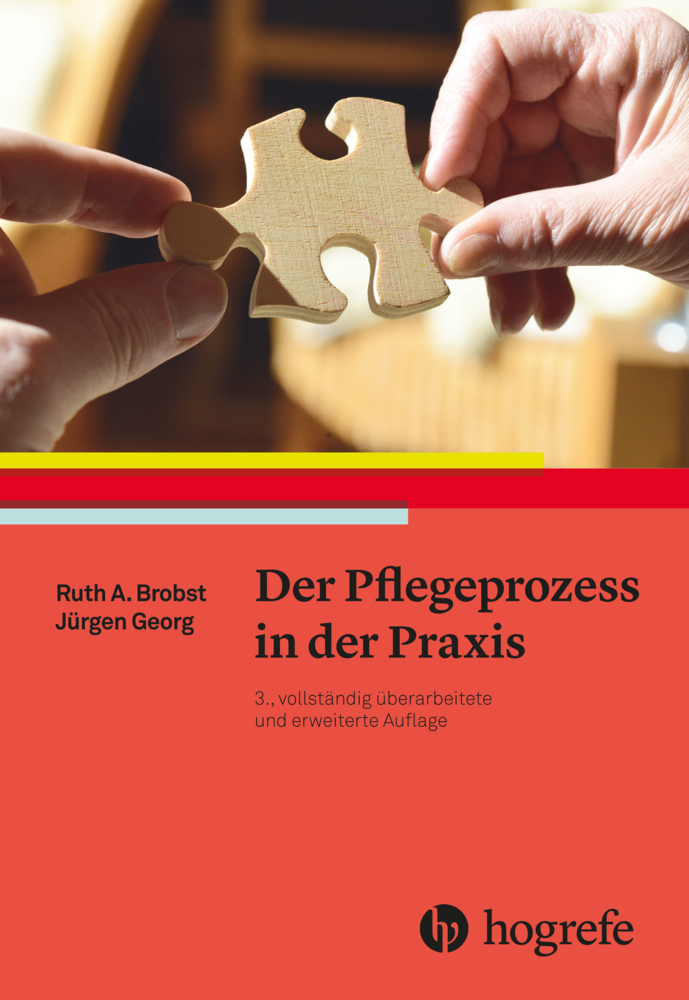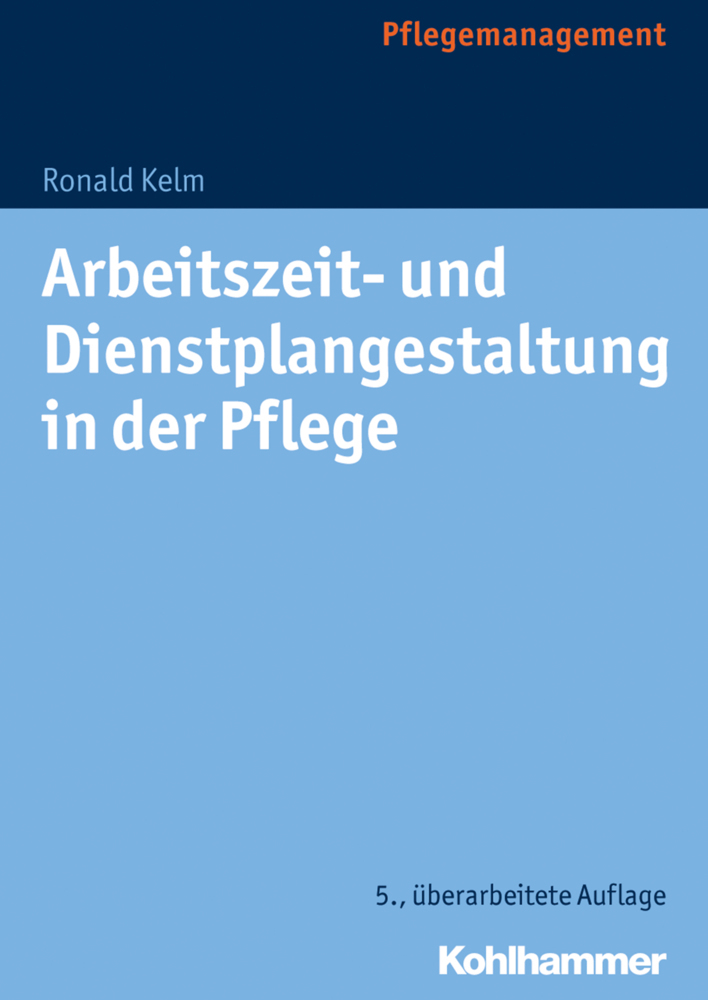Principles and Applications of Magnetic Particle Imaging
Bernhard Gleich introduces Magnetic Particle Imaging (MPI) including all aspects that are necessary for a complete understanding. MPI is a new imaging modality invented by Bernhard Gleich and Jürgen Weizenecker. The method is capable of imaging the distribution of superparamagnetic iron oxide particles (SPIOs) with high sensitivity, high spatial resolution, and high imaging speed. The author summarizes the results of a number of original papers and countless innovations he has elaborated in the young discipline of magnetic particle imaging.
Dr. Bernhard Gleich works as a senior scientist at an electronics and medical imaging company in Hamburg.
Dr. Bernhard Gleich works as a senior scientist at an electronics and medical imaging company in Hamburg.
1;Preface by the Series Editor;6 2;Foreword;7 3;Contents;8 4;1 Introduction;11 5;2 Medical imaging methods;14 5.1;2.1 Signal penetration;15 5.2;2.2 Tissue interaction;17 5.3;2.3 Signal confinement/resolution;18 5.4;2.4 Overview of existing imaging methods;20 5.5;2.5 Conclusions for successful new imaging modalities;24 6;3 Basic idea of Magnetic Particle Imaging;27 6.1;3.1 Signal generation and recording;27 6.1.1;3.1.1 Signal generation ;27 6.1.2;3.1.2 Signal confinement;31 6.1.3;3.1.3 Drive field;33 6.2;3.2 Reconstruction;35 7;4 Magnetic particle properties;40 7.1;4.1 Demagnetization factor ;40 7.2;4.2 Single domain particles and the Langevin theory;43 7.3;4.3 Remagnetization processes;45 7.4;4.4 Magnetic anisotropy;47 7.5;4.5 Particle-particle interactions;50 8;5 The Focus Field;52 8.1;5.1 Patient safety;52 8.2;5.2 Technical limitations;53 8.3;5.3 Additional fields, the focus fields;53 9;6 Resolution, sensitivity and speed;55 9.1;6.1 Unlimited resolution?;55 9.2;6.2 Sensitivity;57 9.2.1;6.2.1 Signal strength;58 9.2.2;6.2.2 Patient noise;58 9.2.3;6.2.3 Detection limit of MPI;59 9.2.4;6.2.4 Detection limit of MRI;60 9.2.5;6.2.5 Detection limit of CT;60 9.2.6;6.2.6 Detection limit of PET and SPECT;62 9.3;6.3 Encoding efficiency;63 9.4;6.4 Speed limit;71 9.4.1;6.4.1 MPI encoding speed;71 9.4.2;6.4.2 Ultrasound encoding speed;72 9.4.3;6.4.3 CT encoding speed;72 9.4.4;6.4.4 MRI encoding speed;73 10;7 Experimental and simulation results on MPI;75 11;8 Potential applications of MPI;79 11.1;8.1 Combination with magnetic resonance imaging;79 11.2;8.2 Vascular applications;82 11.2.1;8.2.1 Cardiovascular;83 11.2.2;8.2.2 Neurovascular;85 11.3;8.3 Gastrointestinal;86 11.4;8.4 Lung;87 11.5;8.5 RES imaging/direct inflammation imaging;87 11.6;8.6 Cell labelling;88 11.6.1;8.6.1 Red blood cell labelling;88 11.6.2;8.6.2 White blood cell labelling;89 11.6.3;8.6.3 Stem cell labelling;90 11.7;8.7 Sentinel lymph node imaging;90 11.8;8.8 Hyperthermia;91 12;9 Potential further developments and applications;93 12.1;9.1 Tissue intrinsic contrast MPI;93 12.2;9.2 Targeted imaging;93 12.3;9.3 Lung diffusion imaging;94 12.4;9.4 Temperature imaging;95 12.5;9.5 MPI-acoustic imaging and Elastography;97 12.6;9.6 Pulmonary artery pressure;98 12.7;9.7 Object tracking and manipulation;100 12.8;9.8 Electrophysiology imaging;102 12.9;9.9 Light modulation;104 12.10;9.10 X-ray modulation;105 12.11;9.11 Targeted drug delivery;105 13;10 Conclusion;107 14;Bibliography;112
Gleich, Bernhard
| ISBN | 9783658019617 |
|---|---|
| Artikelnummer | 9783658019617 |
| Medientyp | E-Book - PDF |
| Auflage | 2. Aufl. |
| Copyrightjahr | 2013 |
| Verlag | Springer Vieweg |
| Umfang | 118 Seiten |
| Sprache | Englisch |
| Kopierschutz | Digitales Wasserzeichen |

